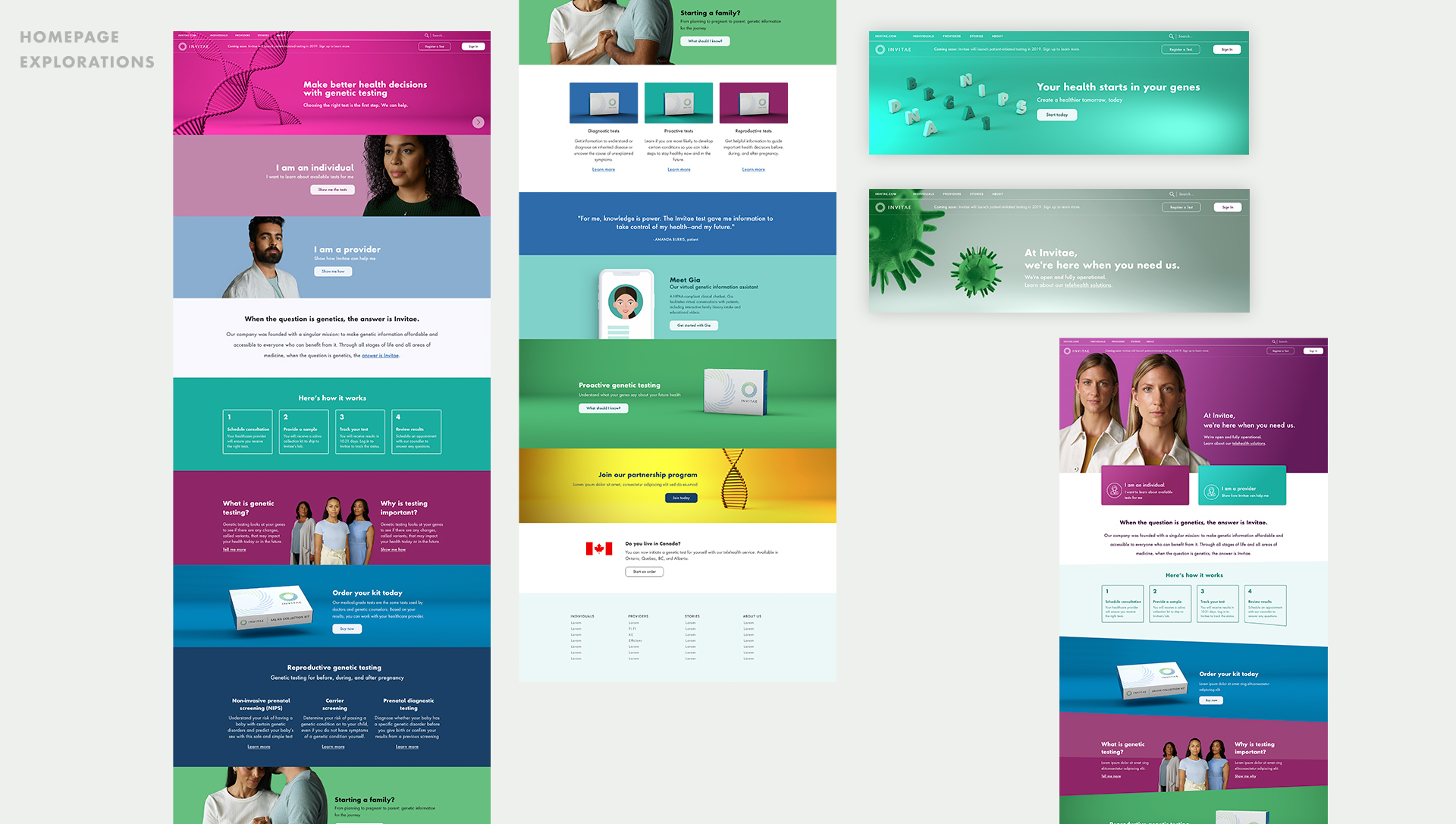Biotech
Invitae
Invitae was one of the fastest growing genetic information companies around.
I collaborated closely with stakeholders, user researchers, and engineers to design seamless web and mobile experiences across all online tools.
Working alongside user researchers and designers, I transformed storyboards, wireframes, and requirements into high-fidelity visual designs for both web and mobile platforms. Additionally, I played a role in promoting the style guide and ensuring visual design consistency.
Given the unique demands of the healthcare industry, our focus was on building trust, maintaining intuitiveness, and ensuring users feel secure with their sensitive data, prioritizing full transparency.
For patient portals, we adopted a mobile-first approach, while emphasizing larger screen designs for providers. User research and testing were integral components throughout many projects.
I actively participated in the entire product lifecycle, from conceptualization to launch, across most projects.
Beyond the portals, I contributed to Backoffice and various internal tools. I played a role in creating the DSM (Design System Manager), developing mobile apps, and enhancing the front-end to align with ADA standards for our website.
Whenever possible, automate it.
| Invitae | |
| Title: | Senior Product Designer |
| Roles: |
CASE STUDIES > |
Optimizing Patient Billing Notifications
Challenge: In the Simplify Billing program, the existing workflow for patient notifications relied heavily on manual processes, leading to potential errors and delays in billing notifications. The inefficiencies in the previous flow not only impacted the billing team's workload but also compromised the overall patient experience.
Solution: To address these challenges, we designed and implemented two new automated workflows aimed at enhancing the billing experience for patients. These workflows automated the generation and delivery of billing notifications to patients, eliminating the need for manual intervention by the billing team.
Process: We conducted a thorough analysis of the existing billing notification process, identifying pain points and areas for improvement. Insights from patient feedback and billing team observations guided our approach.
Based on our findings, we developed two automated workflows leveraging modern automation tools and technologies. These workflows were designed to generate and send billing notifications to patients seamlessly and accurately.
We tested the new workflows to ensure reliability, accuracy, and compliance with regulatory requirements. Feedback from both patients and the billing team informed iterative improvements to the workflows.
Outcome: The implementation of the new automated workflows resulted in significant improvements to the billing process:
- Enhanced Patient Experience: Patients now receive timely and accurate billing notifications, improving transparency and reducing uncertainty.
- Efficiency Gains: Automation of the billing notification process eliminated manual work for the billing team, saving up to seven days in processing time.
- Error Reduction: By reducing manual intervention, the risk of errors in billing notifications was minimized, enhancing overall data accuracy.
Conclusion: Through the implementation of automated workflows, we successfully transformed the billing notification process, delivering tangible benefits for both patients and the billing team. The project exemplifies the importance of leveraging UX design principles to streamline processes and improve user experiences in healthcare billing systems.
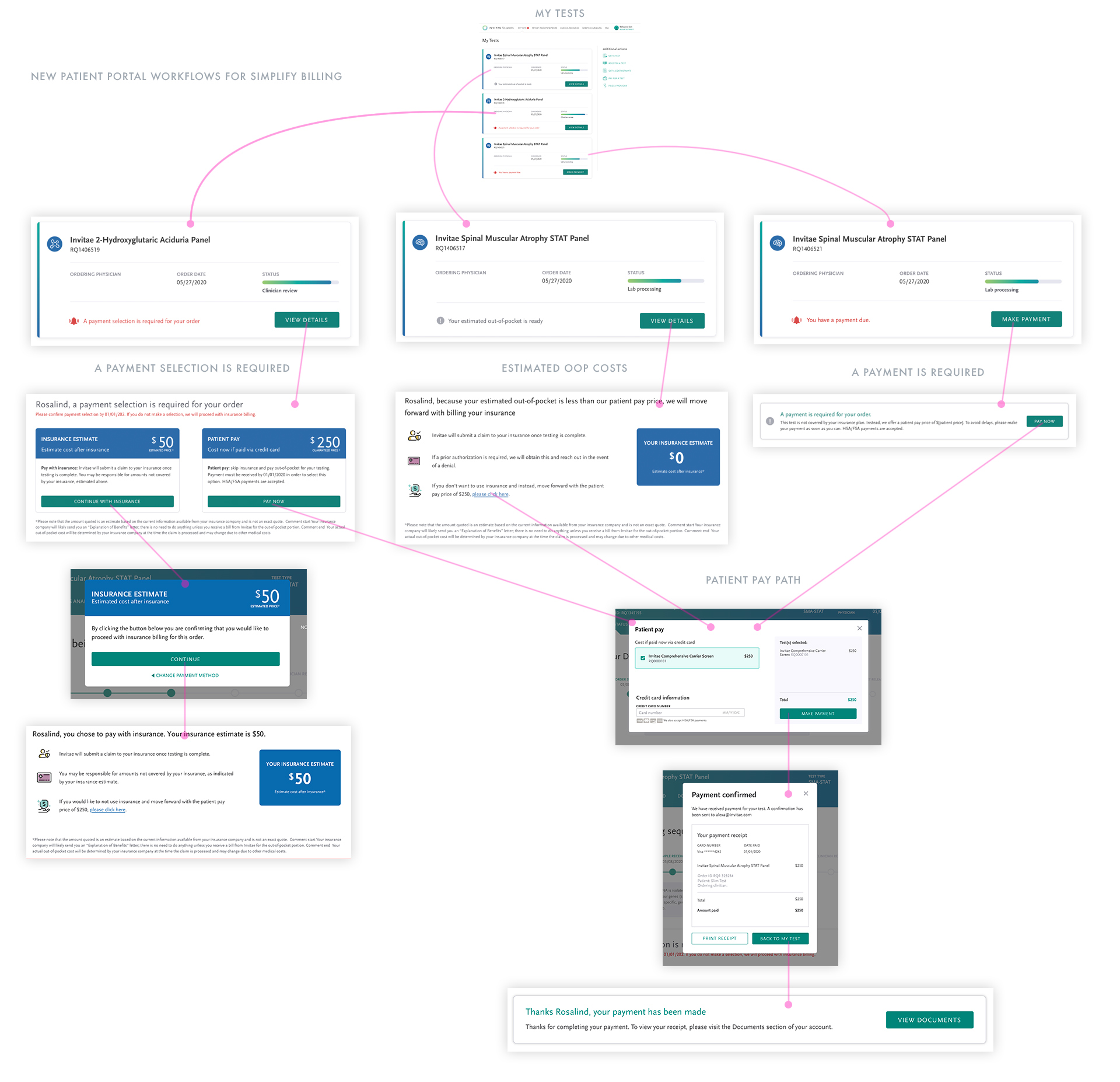
Enhancing Healthcare Provider Portal Order Form
Challenge: The healthcare provider portal required a redesigned order form to accommodate multiple test types (carrier, NIPS, and proactive) in a single transaction, aiming for improved user-friendliness. Additionally, providers requested enhancements to the HCP Orders & reports table, including customizable columns, improved filtering, and export capabilities. The challenge was to create a more intuitive order form and improve the functionality of the existing table while ensuring compatibility with current user workflows.
Solution: We proposed a comprehensive solution to address the challenges:
- Redesigned Order Form: Implemented a 'stepper' interface to simplify the ordering process, with each section displayed on its own page. This approach streamlined the ordering process and guided users through each step clearly.
- Launchpad for Reordering: Introduced a launchpad feature for providers to easily reorder past tests, enhancing convenience and facilitating recurring orders.
- Enhanced Table Functionality: Updated the HCP Orders & reports table to allow users to add new columns and customize them according to their preferences. Improved filtering and export capabilities were also implemented to enhance data management and analysis.
- Research & Analysis: Conducted research with providers to understand pain points and gather requirements for the order form and table enhancements.
- Design & Development: Developed wireframes and prototypes based on user feedback, incorporating the 'stepper' interface, launchpad, and table enhancements.
- Testing & Iteration: Conducted usability testing with current users to gather feedback on the prototypes and iteratively refine the designs.
- Implementation & A/B Testing: Rolled out the redesigned order form and table enhancements in parallel with the existing experience, framing it as an A/B test to evaluate effectiveness and user satisfaction.
Outcome:
- Improved User Experience: The redesigned order form and table enhancements led to improved user satisfaction and efficiency.
- Streamlined Workflow: The 'stepper' interface simplified the ordering process, while the launchpad feature facilitated easy reordering of past tests.
- Enhanced Table Functionality: The updated HCP Orders & reports table provided users with greater flexibility and control over data display and management.
We tested the new workflows to ensure reliability, accuracy, and compliance with regulatory requirements. Feedback from both patients and the billing team informed iterative improvements to the workflows.
Outcome: The implementation of the new automated workflows resulted in significant improvements to the billing process:
- Enhanced Patient Experience: Patients now receive timely and accurate billing notifications, improving transparency and reducing uncertainty.
- Efficiency Gains: Automation of the billing notification process eliminated manual work for the billing team, saving up to seven days in processing time.
- Error Reduction: By reducing manual intervention, the risk of errors in billing notifications was minimized, enhancing overall data accuracy.
Conclusion: Through a collaborative design process and iterative testing, we successfully addressed the challenges faced by healthcare providers in the order form and table functionalities. The continual work-in-progress approach ensures ongoing improvements to meet evolving user needs and preferences.
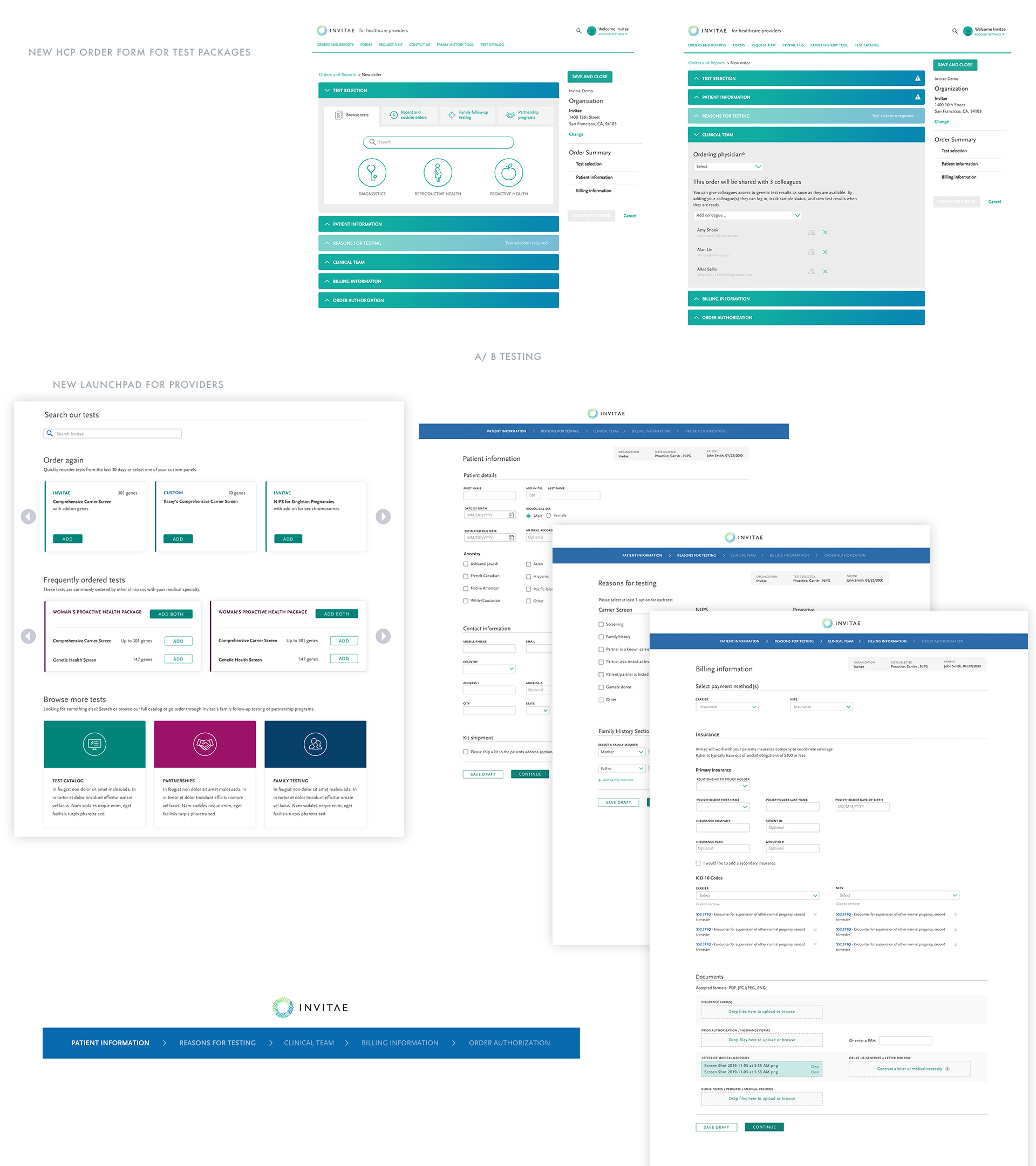
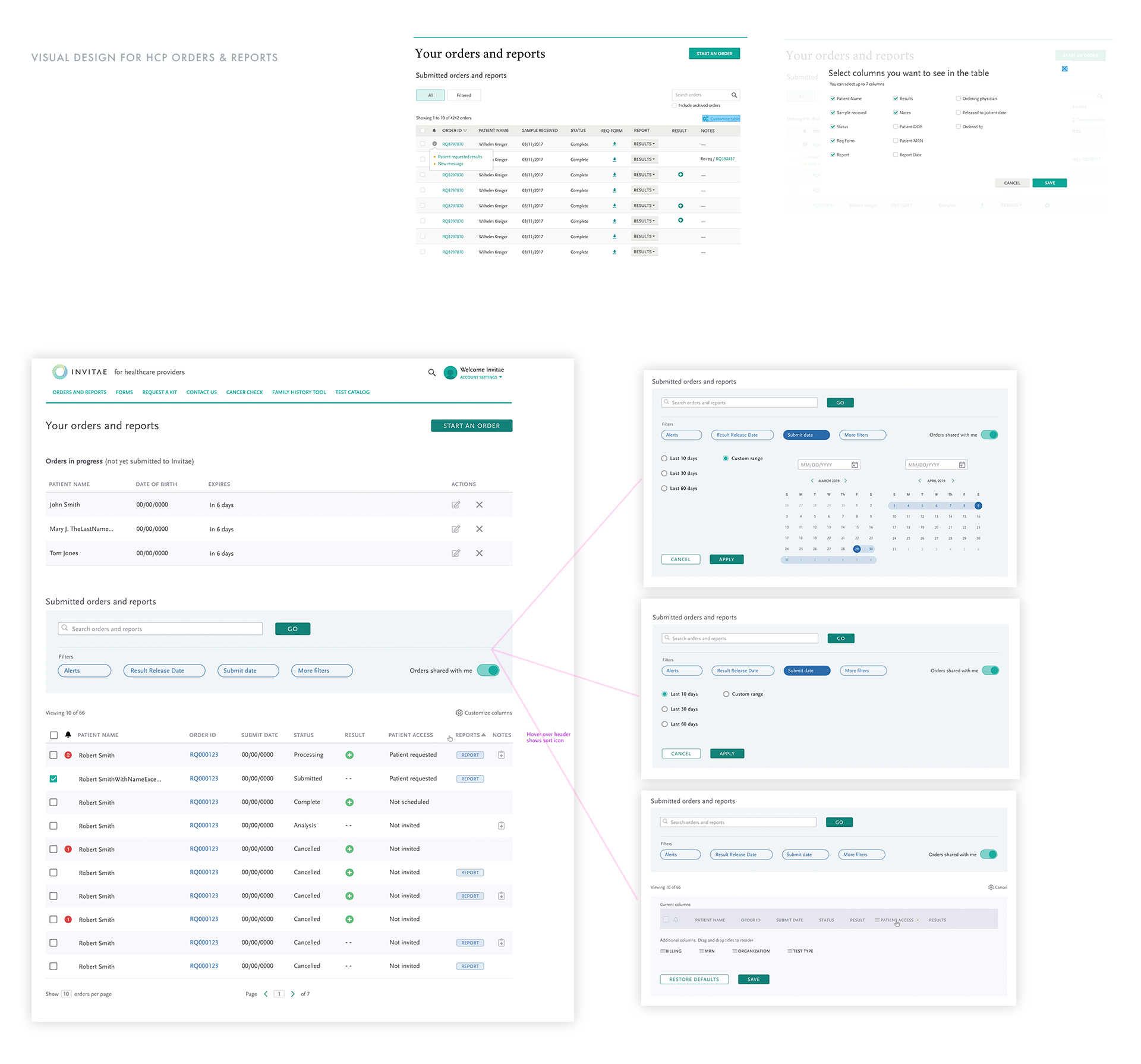
Designing an iOS App for Invitae's IRB-Approved Experiment
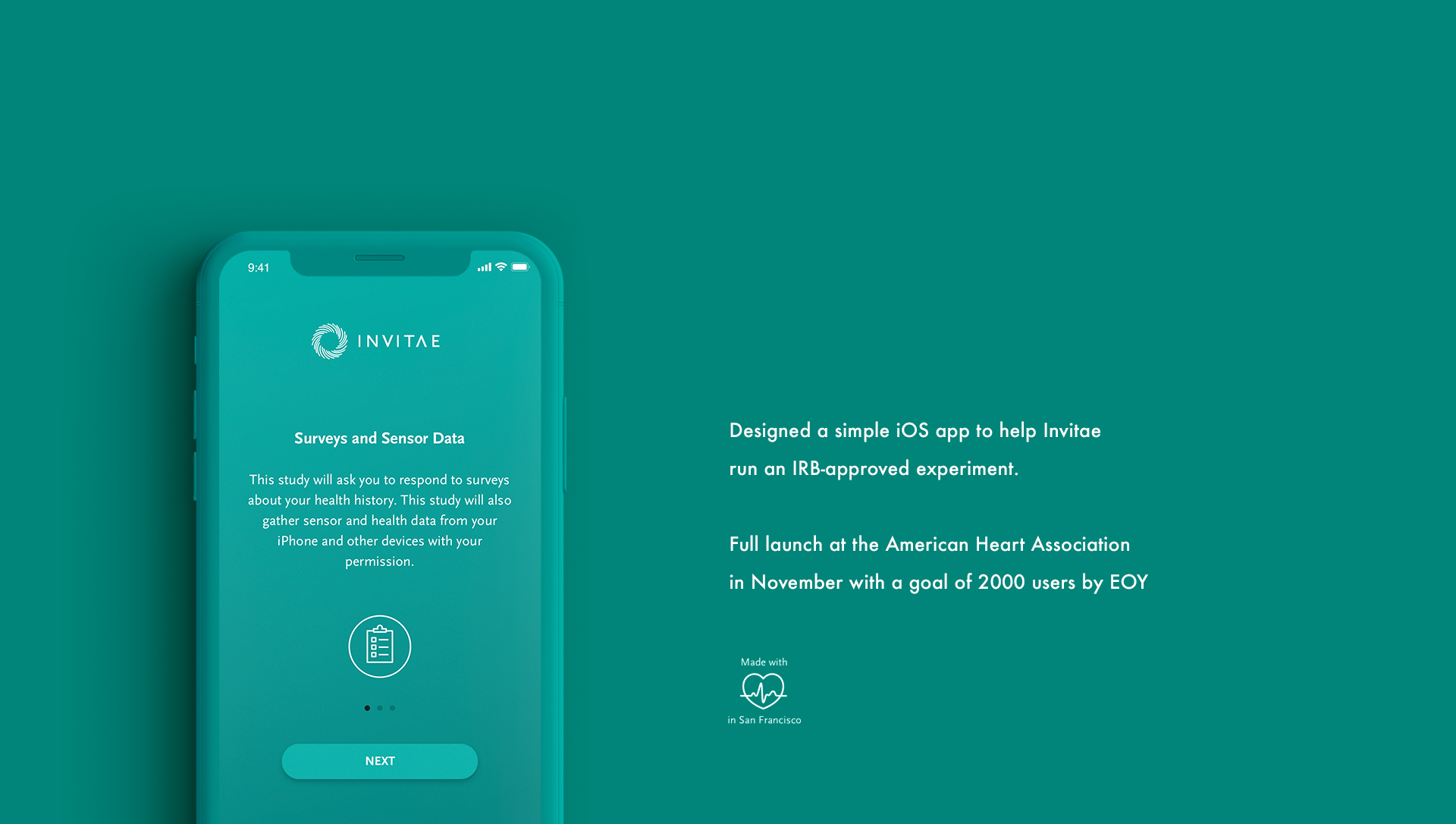
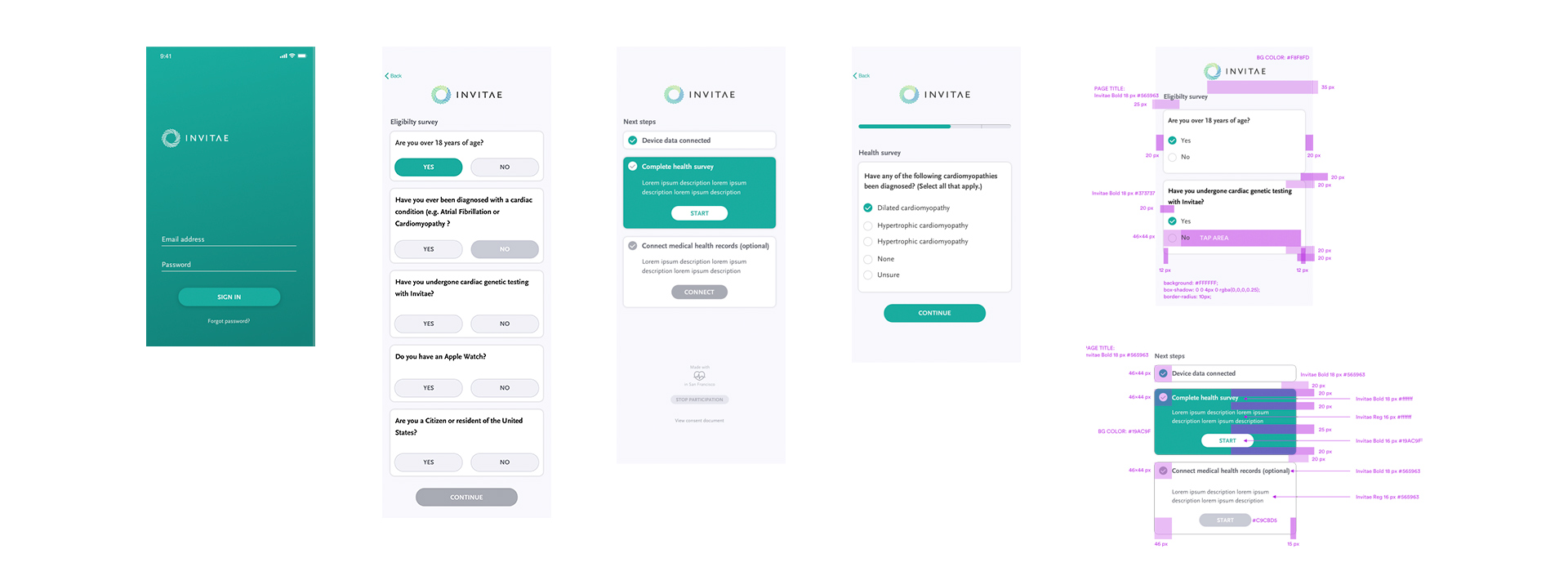
Homepage design explorations
Each designer was tasked to design new homepages using Invitaes new color palette, photography and add our own touch of personality.